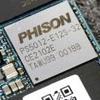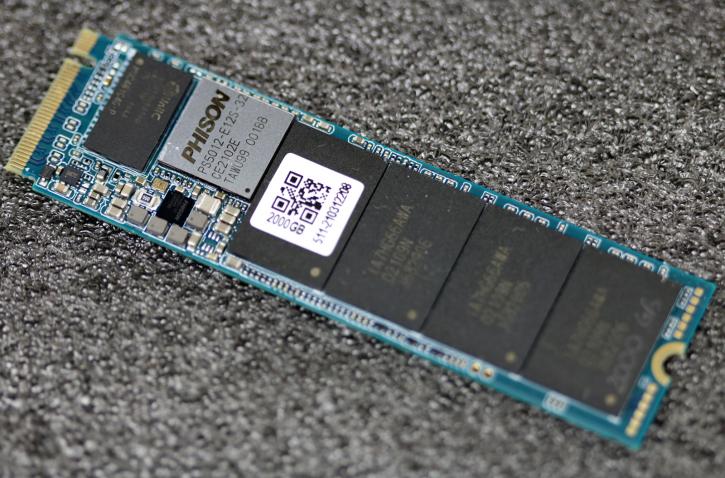Final Words & Conclusion
Final Words & Conclusion
The Team Group MP34Q reveals itself to be a pretty average-performing storage unit (overall), we are not sure that this should be the SSD to purchase, especially when considering the price and characteristics of QLC. There are significantly superior TLC-based NAND flash storage units available at a lower or the same price that provide far better performance. QLC SSDs are notorious for revealing imperfections, and the MP34Q is no exception. Without a doubt, this SSD performs four times better than the ordinary SATA3 SSD, but as previously indicated, you can obtain a faster SSD with greater endurance for the same price. Endurance remains the biggest Achilles heel, but that is precisely why these large-volume SSDs are produced: more cells equals greater endurance. We'll go into more detail about this in the following chapter, however.
Endurance
So, in terms of everyday PC usage, gaming, and mass (cold) storage, such as your movie and game library, there isn't much to be disappointed in. Nevertheless, any potential end-users (such as yourself) will be met with a shiver, as it is the same shiver that the transition from MLC to TLC NAND elicited, and that is lifetime, also known as endurance. To be honest, I wouldn't mind spending an extra $10 for a TLC drive right now, depending on the slight pricing variations between the two options right now. When you take things into consideration mathematically, though, the picture does change somewhat. For the sake of illustration, consider the submitted and reviewed 2 TB version with its rated 450 TBW: you would need to completely write the SSD 225 times x 2TB before the NAND cells start to fail before the SSD would be considered fully written. If you write 50 GB each day every day of the year (which is a lot!) multiplied by 365 / 1000 = 18.25 TB written per year, we have a more manageable amount of data and lifespan to work with. Accordingly, the 2TB model will last approximately 24.6 years in this situation. Those are the types of metrics we're referring to. Consequently, in terms of longevity and durability, for a regular PC gamer or user, I would not be overly concerned. Once again, it is the large volume sizes that save QLC in this situation.
Performance and write holes
The devil is in the details, and if we look closely at the trace data, we may conclude that the SSD is comparable to a typical to average PCIe 3.0 SSD in its price range. When it comes to transferring huge files, the MP34Q will perform about as well as the 'average' competition. While the pseudo-SLC cache is being written to, the transfers average 1250 MB/s and are sustained for a significant amount of time during the writing operation. In reality, the SSD will initially fill up its whole capacity with SLC data before commencing to write directly to QLC storage media for the remainder of its life. During this stage, write speeds are lowered by more than 90 percent, with maximum rates of approximately 250 MB/s being achieved. Our linear write test shows this abundantly. It should go without saying that temporarily pausing writing activity will result in the SLC cache immediately becoming available for use again. This implies that after the drive has had a chance to settle down, it will be possible to write at its maximum perf capacity real fast.
QLC written memory suffers from a difficulty in that once your FIFO write buffers (pSLC) are depleted, QLC will experience what we call the QLC/TLC write hole, resulting in a significant loss in performance. We just described that effect. After writing 35% of the capacity at 1250 MB/sec, the perf caves in towards that 250 MB/sec, the write hole was clearly evident. This is, in essence, what NAND provisioning is all about. All hot data is written to SLC first, and then moved to QLC.
Concluding
The MP34Q is one of those SSDs that perform respectably in synthetic tests but fall short in more demanding workloads; with continuous and linear loads, you're better off looking elsewhere. At 15 cents per GB, the SSD is too costly; it did not wow me in any way and is on par or slightly below other NVMe 1.3-based TLC SSDs. QLC was offered to the market as a low-cost solution for large amounts of storage. As such, we do not consider QLC SSDs to be economically viable until the cost per GB falls below ten cents. QLC also faces two difficulties. The first factor is endurance, while the second factor is RAW write performance. This 2TB SSD that we just tested has a write capacity of 450 TB before cells begin to die and re-map data. Realistically, that is a sufficient value for current PCs. But if you require a large amounts of data to be written, or have hefty workloads, this is not the SSD for you. The performance degradation in linear and sustained writes is rather severe, even dipping to 250 MB/sec on average when your caches run dry. These QLC SSDs, in my opinion, are a realistic solution for laptops and cold storage, such as NAS storage for your movie or game collection. If you're looking for a little extra peace of mind, your next stop should be a TLC-based SSD. However, the other significant influencing factor to consider in the NAND space is price. For QLC to be economically viable, its price must be drastically reduced. At the moment, TLC-based SSDs in about the same performance class are available for less than 15 cents per GB. Naturally, end customers will gravitate toward the TLC NAND product series for the aforementioned reasons.
We rate the MP34Q's performance as average for a contemporary NVMe 1.3 SSD. What QLC has going for it is its volume sizes; this SSD is available in capacities of 2TB, 4TB, and even 8TB. That is a delightful fact; having a large-capacity NVMe SSD is a wonderful thing. However, for QLC to acquire widespread use, prices must fall below those of TLC NAND, and overall write performance must drastically increase for this SSD type to be considered even slightly attractive in more stringent workloads.
- Sign up to receive a notification when we publish a new article
- Or go back to Guru3D's front page.


